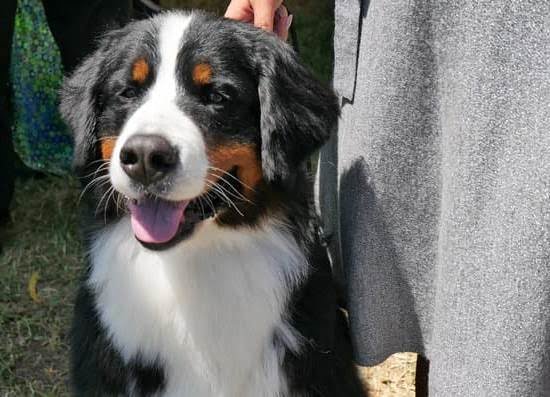What type of training do K9 dogs go through in their rigorous preparation for law enforcement duties? K9 units play a vital role in law enforcement, providing invaluable assistance in various operations. These specially trained dogs are utilized for tasks such as detection, tracking, and apprehension.
The history of K9 units dates back decades, with these four-legged officers becoming an integral part of law enforcement around the world. Over time, K9 units have proven to be essential in assisting officers in numerous situations, making them indispensable to police forces.
When it comes to selecting dogs for K9 training, specific criteria are considered to ensure that only the most suitable candidates undergo rigorous training. Basic obedience training serves as the foundation for all further specialized training that K9 dogs will receive to perform their designated roles effectively.
History of K9 Units
K9 units have become an indispensable part of law enforcement agencies worldwide, but how did these specialized units come to be? The history of K9 units dates back to the early 20th century when law enforcement recognized the unique abilities that dogs possess in aiding police work. The first recorded use of police dogs in law enforcement can be traced back to Belgium in the late 19th century, where bloodhounds were used to track suspects and missing persons.
The concept of using dogs for specific tasks such as tracking, search and rescue, detection of drugs, explosives, and other contraband gradually gained popularity across different countries. It was not until after World War I that the idea of formalized K9 units began to take shape.
As technology advanced, so did the training methods for these canine partners in crime prevention. Today, K9 units are a crucial asset in various law enforcement agencies worldwide due to their keen sense of smell, agility, and loyalty.
In modern times, K9 units have diversified into different specialties based on the tasks they are trained to perform. From patrol and narcotics detection dogs to search and rescue and cadaver dogs, each type undergoes specific training tailored to their duties.
This specialization allows for a more efficient allocation of resources within law enforcement agencies. Additionally, the rigorous selection process ensures that only the most suitable candidates progress through various stages of training that prepare them for real-life situations they may encounter on duty.
| History of K9 Units | Data |
|---|---|
| First Recorded Use | Belgium in late 19th century |
| Development | After World War I |
| Specialties | Patrol, Narcotics Detection, Search and Rescue, Cadaver Dogs |
Types of K9 Dogs
K9 units in law enforcement utilize a variety of dog breeds, each with specific characteristics and roles that make them suitable for different tasks. German Shepherds are one of the most commonly used breeds in K9 units due to their intelligence, versatility, and strong work ethic. They are often trained for tracking, searching, apprehending suspects, and detecting narcotics or explosives.
Belgian Malinois are another popular choice for K9 units because of their agility, energy, and keen sense of smell. They excel in apprehension work and detection tasks.
Labrador Retrievers are frequently employed as detection dogs in K9 units because of their friendly nature, high food drive, and excellent scenting abilities. These dogs are trained to sniff out drugs, explosives, or other contraband in various environments. Bloodhounds have an exceptional sense of smell and are commonly used for tracking down missing persons or suspects over long distances. Their unique ability to follow scent trails makes them valuable assets in search-and-rescue operations.
It is essential for K9 units to have a mix of breeds with diverse skills to perform different law enforcement tasks effectively. By strategically selecting and training K9 dogs based on their breed-specific traits, law enforcement agencies can maximize the capabilities of their canine teams in various operations.
| Breed | Role |
|---|---|
| German Shepherd | Tracking, searching, apprehension |
| Belgian Malinois | Apprehension work, detection tasks |
| Labrador Retriever | Detection of drugs, explosives |
| Bloodhound | Tracking missing persons or suspects over long distances |
The Selection Process
When it comes to building a successful K9 unit, selecting the right dogs for training is a crucial step. The selection process involves careful considerations to ensure that the chosen canines have the right qualities and characteristics needed for a career in law enforcement. Here are some key factors that come into play when choosing K9 dogs for training:
- Temperament: One of the most important traits looked for in potential K9 candidates is a stable and balanced temperament. Dogs selected for training should be confident, social, and not easily flustered by new environments or loud noises.
- Drives: K9 dogs undergo various types of specialized training, so having strong drives is essential. Drives such as hunt drive (desire to search), play drive (desire to work), and defense drive (ability to protect) are crucial for different aspects of law enforcement work.
- Health and Physical Ability: To handle the demanding tasks required of them, K9 dogs must be in peak physical condition. Regular veterinarian check-ups, proper nutrition, and exercise routines are essential to ensure that they can perform their duties effectively.
Selecting the right K9 dogs also involves evaluating their trainability, adaptability, and compatibility with their handlers. Once chosen, these dogs go through a rigorous screening process to assess their suitability for law enforcement work.
In addition to these considerations, certain breeds are more commonly used in K9 units due to their innate characteristics and abilities. German Shepherds, Belgian Malinois, Labrador Retrievers, and Dutch Shepherds are among the popular choices for police work due to their intelligence, agility, loyalty, and trainability. Ultimately, the selection process aims at identifying dogs that possess the right mix of qualities to excel in their roles as valuable members of law enforcement teams.
Basic Obedience Training
One key aspect of basic obedience training is ensuring that the K9 dog is responsive to their handler’s commands at all times. This level of control is crucial when it comes to working in high-stress situations or potentially dangerous environments.
The K9 dog must be able to focus on their handler’s instructions and carry out tasks quickly and accurately. Through consistent practice and reinforcement, these commands become second nature to the K9 dog, allowing them to perform effectively in various scenarios.
Moreover, basic obedience training helps foster trust and teamwork between the K9 dog and their handler. By establishing clear communication and a solid working relationship during this foundational training phase, the K9 team can build a strong partnership based on mutual respect and understanding.
This bond is essential for success in more advanced training exercises and real-life law enforcement operations. It lays the groundwork for a K9 dog to fulfill their duties effectively while ensuring the safety of both civilians and law enforcement personnel.
Specialized Training
K9 dogs undergo specialized training to perform their roles effectively in law enforcement. This type of training focuses on honing the natural abilities of these canine partners, such as their keen sense of smell and strong tracking instincts. Let’s delve into the specific aspects of detection, tracking, and apprehension training that K9 dogs go through to become valuable assets in law enforcement.
Specialized Training for K9 Dogs:
1. Detection Training: One key aspect of specialized training for K9 dogs is detection work. These dogs are trained to detect various substances, including narcotics, explosives, and even human remains. This training involves exposing the dogs to different scents in controlled environments to develop their ability to alert their handlers when they detect a target odor.
2. Tracking Training: Tracking is another vital skill that K9 dogs learn during specialized training. These dogs are taught how to follow a scent trail left behind by a person, whether it be a lost individual or a fleeing suspect. Tracking training helps K9 units locate missing persons quickly and efficiently, as well as apprehend suspects who are trying to evade capture.
3. Apprehension Training: In apprehension training, K9 dogs learn how to confront and subdue suspects when necessary. This involves teaching the dogs how to safely engage with individuals while protecting themselves and their handlers. Apprehension training instills discipline and control in these canine officers so they can effectively assist in taking down threats when called upon.
By undergoing this specialized training, K9 dogs are equipped with the skills needed to carry out their duties effectively in law enforcement operations. The rigorous nature of this training ensures that these canine partners are prepared for any situation they may encounter in the line of duty.
On-the-Job Training
K9 dogs undergo a rigorous training process to prepare them for the challenging and demanding tasks they will face in the field. One crucial aspect of their training is on-the-job training, which involves exposing the K9 dogs to real-life scenarios and simulations to ensure they are ready to perform their duties effectively. This phase of training helps K9 dogs apply their skills in practical situations and adapt to different environments.
During on-the-job training, K9 dogs are introduced to various scenarios that mimic what they may encounter on duty. These scenarios can include searching for drugs or explosives in different types of buildings, tracking suspects through urban areas or wooded areas, and apprehending suspects while under the guidance of their handlers. By experiencing these situations firsthand, K9 dogs learn how to respond quickly and efficiently, developing the instincts necessary for success in the field.
Simulations play a crucial role in preparing K9 dogs for the unpredictable nature of law enforcement work. These exercises are designed to challenge the dogs mentally and physically, testing their abilities in controlled environments. By practicing in simulated scenarios, K9 dogs can refine their skills and build confidence in their capabilities. Overall, on-the-job training provides K9 dogs with valuable experience that enhances their performance when faced with real-world challenges.
Continuing Education
Advanced Training Programs
After completing their initial training, K9 dogs and their handlers participate in advanced training programs to ensure they are prepared for any situation they may encounter in the field. These programs focus on enhancing the skills already learned during basic and specialized training. Advanced training may include scenarios that simulate high-stress situations, such as dealing with armed suspects or navigating through challenging terrain.
Regular Training Exercises
To maintain peak performance, K9 units engage in regular training exercises that mimic real-life scenarios. These exercises help reinforce obedience commands, detection skills, tracking abilities, and apprehension techniques. By consistently practicing these skills, K9 dogs are better equipped to handle the demands of law enforcement work. Handlers also benefit from these exercises by sharpening their communication with their canine partners.
Workshops and Seminars
In addition to practical training exercises, K9 units attend workshops and seminars to stay up-to-date on the latest techniques and advancements in the field. These educational opportunities provide valuable insights into new methods of training and emerging trends in law enforcement. By attending workshops and seminars, both K9 dogs and their handlers can continue to improve their skills and enhance their effectiveness on the job.
By participating in advanced training programs, regular exercises, workshops, and seminars, K9 dogs and their handlers are able to stay well-equipped to handle the ever-evolving challenges of law enforcement. The commitment to continuing education ensures that K9 units remain a crucial asset in maintaining public safety and upholding the law effectively.
Conclusion
K9 dogs are an invaluable asset to law enforcement agencies around the world, playing a vital role in various operations such as detection, tracking, and apprehension of suspects. The rigorous training that these highly skilled canines undergo is essential in preparing them for the demands of their job. From basic obedience training to specialized skills like detecting narcotics or explosives, K9 dogs go through intensive coaching to hone their abilities.
The selection process for K9 dogs is crucial, as not all breeds are suitable for police work. German Shepherds, Belgian Malinois, and Labrador Retrievers are some of the common breeds selected for their intelligence, agility, and strong work ethic.
Once chosen, these dogs undergo extensive basic obedience training before moving on to specialized skills training. This specialized training includes scent detection work, tracking exercises, and even simulated apprehension scenarios to ensure that they are prepared for any situation they may encounter in the line of duty.
In conclusion, K9 dogs are an indispensable part of law enforcement agencies worldwide due to their unique abilities and unwavering loyalty. The intense training they receive enables them to effectively assist their handlers in various tasks ranging from search and rescue missions to apprehending dangerous criminals. The dedication and hard work put into the training of these remarkable animals highlight just how essential they are in keeping communities safe and secure.
Frequently Asked Questions
How Are K-9 Dogs Trained?
K-9 dogs are trained using a method called operant conditioning, which involves positive reinforcement for desired behaviors and correction or redirection for unwanted behaviors. They go through rigorous training to develop their detection, tracking, and obedience skills.
What Method Do Police Use to Train Dogs?
Police typically use a combination of reward-based training and discipline techniques to train K-9 dogs. The dogs learn to associate specific scents with rewards, like toys or treats, which helps them in tasks such as narcotics detection or search and rescue operations. Discipline is also used when they exhibit undesirable behaviors.
Is It Hard to Train K-9?
Training K-9 dogs can be challenging due to the high level of discipline, consistency, and patience required. It takes time and effort to build a strong bond with the dog and establish effective communication. Additionally, each dog has its own unique personality and learning pace, so training methods may need to be adapted accordingly.

Welcome to the blog! I am a professional dog trainer and have been working with dogs for many years. In this blog, I will be discussing various topics related to dog training, including tips, tricks, and advice. I hope you find this information helpful and informative. Thanks for reading!





